

This is the Common Carp, originally labeled Cyprinus carpio, model 20 and number 5 from the second series, in the first releases. However, from what I can tell…it might actually be Cyprinus rubrofuscus, the Amur carp, which is now considered the wild form of the familiar domestic koi. While the latter name was often considered a subspecies C. c. haematopterus, in 2012 genetic and physical properties were used to demonstrate that the species should be regarded as distinct. And since this same model is used for three domestic koi figures in the line, and the species is originally limited to eastern Asia, that is probably the best designation for it.
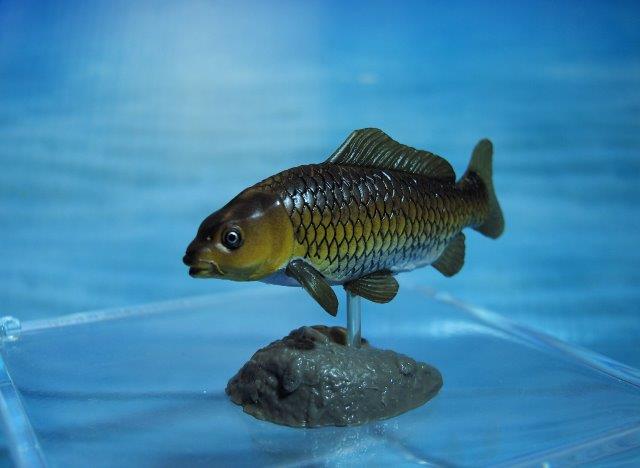
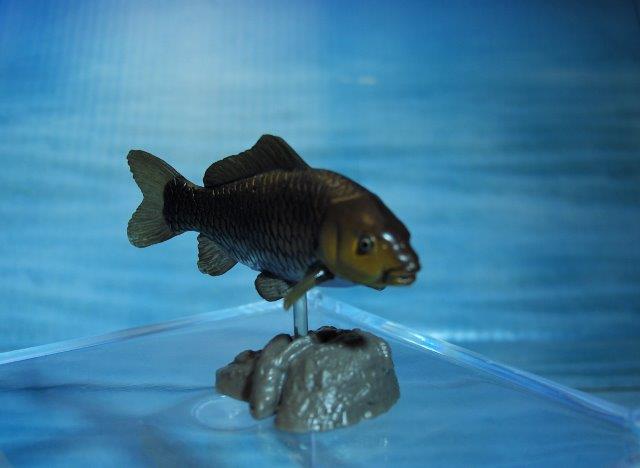
This is one of several cypriniformes, including the goldfish, Langsdorff’s goldfish and a few other dace and shiners (and one loach!) in the Yujin collection. As mentioned, Amur carp are originally from freshwaters of eastern Asia, ranging through Russia, Korea, China, Vietnam and Laos. They have been domesticated for centuries, which has led to the species being introduced throughout most of the world, where it can become a very notable invasive pest, just like the Common carp. But, as a domestic animal, they are notable for their varied and distinct colours and scale morphologies. For example, the three special variants of this figure represent some of the most expensive varieties–a silver, a yellow-gold, and a tri-colour. They are popular in ponds and fish tanks as Koi, but those tanks need to be large–the Yujin model gives a length of 80cm (this was probably part of the Cyrpinus carpio designation); Fishbase gives a maximum length of 28cm. And they can live for decades!
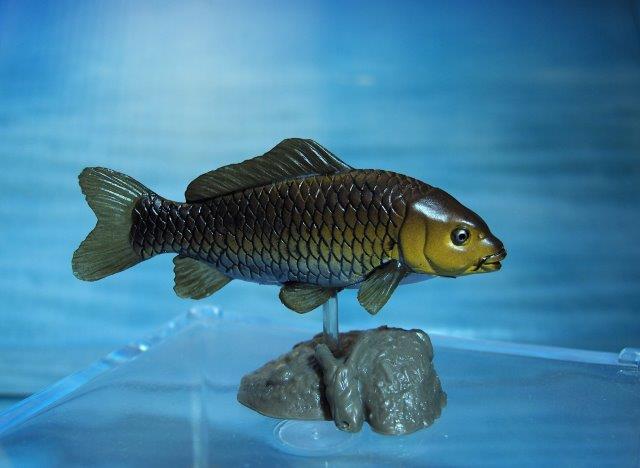

Behaviorally, Amur carp are similar to the Common carp (hence the assumption that they were the same species for so long). They prefer slow or standing waters and well planted sediments. They are a social fish, usually found in groups. The downward-turned mouths and barbels along the mouth indicate that these fish tend to feed off the bottoms. Amur carp are omnivorous, eating anything edible that they find while rooting around, including plant materials but preferring invertebrates, eggs, zooplankton, and even scavenging fish remains. The wild form tends to be somewhat slimmer than the domestic strains, and also stays smaller.

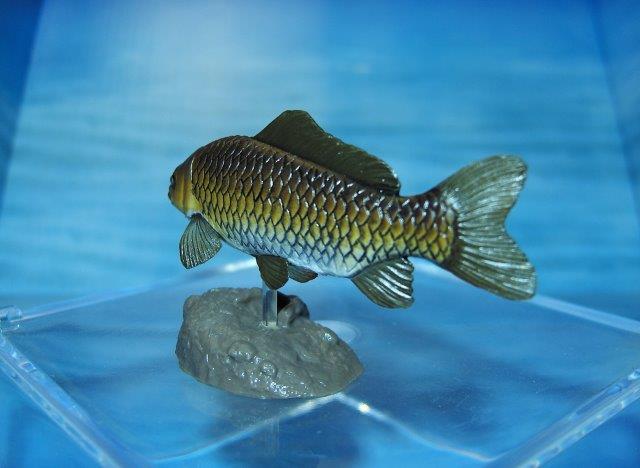
This model is about 6.2 cm long, making the figure roughly 1:13 using the Yujin paper length (If using the Fishbase lengths, the figure is around 1:5 or as small as 1:19 if they get to the size of a European carp). The colour is based on a wild colouration. The back of the fish is a dark olive-brown, fading down the sides into a lighter yellowish-olive, and finally to a white on the belly. This yellow band is how we can tell this is from the first release (the second release is more uniform silver on the lower half). The scales are large and distinct, but do not carry all the way to the belly.


The pose is overall basic, with the fish in a straight line, the tail bending somewhat. All of the fins are a uniform translucent olive. The head is primarily olive-yellow, fading to darker olive on the top. The eyes are large and gold, while the characteristic barbels on the side of the mouth are sculpted against the mouth rather than protruding out. The base for this one is a grey version of the mud & sticks, which tracks for the species.
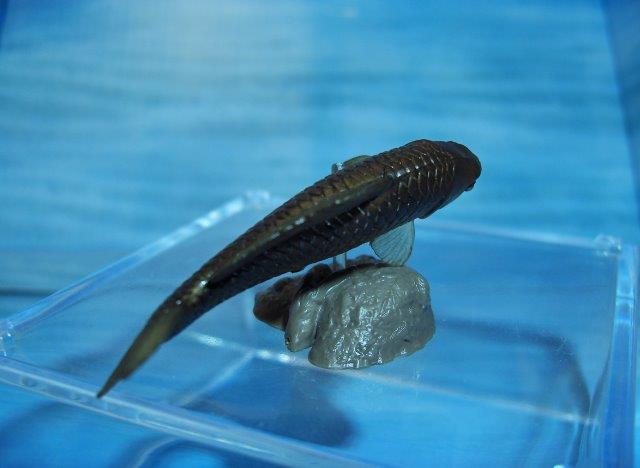
Unlike many of the fish in this series, there are plenty of carp figures, from Japan and elsewhere. New Ray is notable for including one, as well as a number of Kaiyodo figures, plus the occasional toy of carp-like fish. They are also a fish most likely to be seen in more artistic models and statues, usually as the Koi variants. In recent years Safari produced a couple of larger ones in their Incredible Creatures lines. It may not be possible to know for sure if wild carp figures are common carp or Amur carp though, except perhaps the domestic koi. Most likely, it may depend on maker–European makers are more likely to be common carp, Asian makers are probably modeling Amur carp (although most probably wouldn’t worry about species anyway).
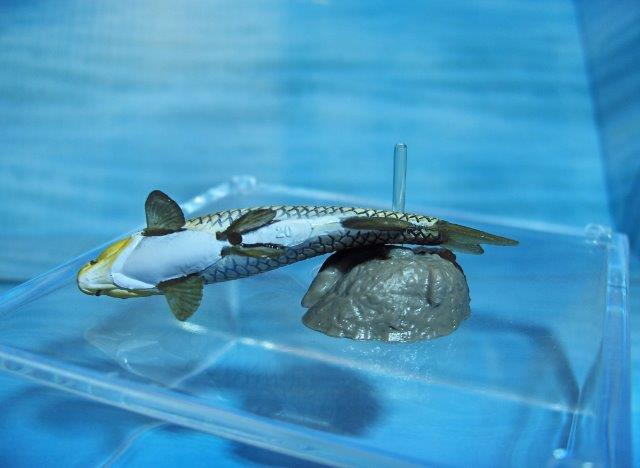
Starting on the 14th of January, 2024, I migrated my first Yujin Freshwater Fish Pictorial walkaround post from the Animal Toy Forum to this blog, with the intention of moving all species’/figures’ walkarounds here. The initial post contained a lengthy explanation of the series (both the original and updated) that I don’t think should be repeated each time! For those details, the post can be seen at the first post. Then we can just get to the fish. Most of the details and writing will come from the original post, although I may supplement/add where appropriate.
Disclaimer: links to Ebay and Amazon on the AnimalToyBlog are affiliate links, so we make a small commission if you use them. Thanks for supporting us!




Good call on the nomenclatural change, especially since the figure came out before the Amur carp was given species-level status. I updated my database to reflect the Amur, too!
It’s surprising how much can change. It also means that most ‘koi’ figures are also Amur carp. The only common/crucian carp figures are likely to be from European makers like Bullyland.
Of course, physically as toys they’re probably near indistinguishable.